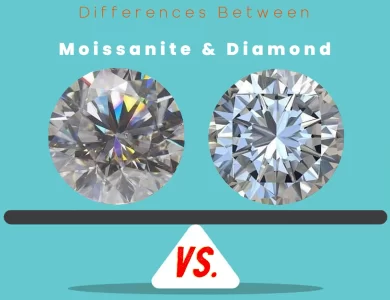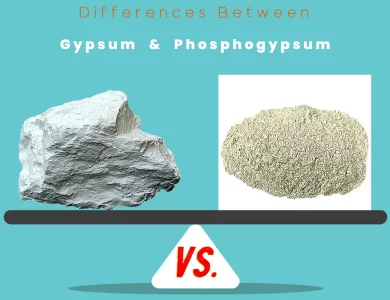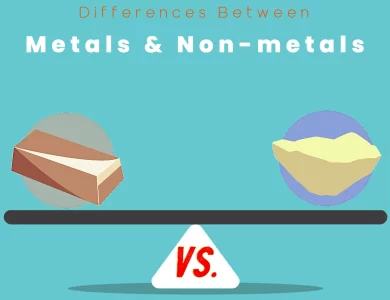Geology
If you’re a geology enthusiast, a student, or simply curious about the diverse concepts and terminology in this field, you’ve come to the right place. In this extensive collection of content, we delve into various aspects of geology, shedding light on the distinctions between different terms, concepts, and items that make up the geological realm. So, let’s embark on this informative journey together!
-

Detrital Sedimentary Rocks vs Chemical
Delve into the intriguing world of sedimentary rocks and discover the stark contrasts between chemical and detrital sedimentary rocks. These geological wonders are like ancient storytellers, preserving tales of our planet's history. Chemical sedimentary rocks, born from the crystallization of minerals in solution, exhibit non-clastic textures, and often, a uniform appearance. On the other hand, detrital sedimentary rocks are crafted from the accumulation and lithification of mineral fragments, displaying fragmental textures that hint at their dynamic past. The divergence doesn't end there. Chemical rocks, such as limestone and halite, tend to be composed of specific minerals resulting from chemical precipitation. Meanwhile, detrital rocks like sandstone and shale boast a diverse mineral composition influenced by their source rocks. These disparities extend to their porosity, strength, and practical applications. Chemical sedimentary rocks are less porous and find uses in construction, while their detrital counterparts, with higher porosity, play crucial roles in agriculture, construction, and as reservoir rocks. Dive deeper into this geological juxtaposition to unravel the stories hidden within Earth's crust. Learn how these rocks are formed, why their textures vary, and how they impact our daily lives through a range of practical applications. Join us in exploring the fascinating world of Chemical vs Detrital Sedimentary Rocks.
-

Marcasite vs Pyrite
When it comes to the world of minerals, Pyrite and Marcasite often share the spotlight due to their striking visual similarities. With both exhibiting a metallic luster and a chemical composition of iron disulfide (FeS₂), distinguishing between these two minerals can be an intriguing challenge. However, beneath their shared exterior lies a world of differences that sets them apart in crystal structure, physical properties, historical significance, and more. Crystal Structure: Pyrite boasts an orthorhombic crystal structure, forming cubic or pyritohedral shapes that catch the eye with their dazzling brilliance. On the other hand, Marcasite showcases a monoclinic structure, often appearing as irregular masses with a subtle metallic luster that exudes antique charm. Physical Properties: While Pyrite's brassy yellow color and spark-producing ability when struck are well-known, Marcasite offers a paler metallic hue with hints of bronze or silver, creating a distinct aesthetic appeal. Historical Significance: Pyrite earned the moniker "fool's gold" due to its resemblance to real gold and has found practical applications in industry. Meanwhile, Marcasite found its niche in vintage jewelry, especially during the Art Deco era, where its delicate beauty graced exquisite designs.
-

Diamond vs Moissanite
When it comes to selecting the perfect gemstone for your jewelry, moissanite and diamond are two contenders that often steal the spotlight. While they both exude exceptional beauty, understanding the differences between these gemstones can help you make the right choice for your unique preferences and budget. Moissanite, a brilliant lab-grown gemstone composed of silicon carbide, offers a budget-friendly alternative to the dazzling allure of diamonds. With its remarkable brilliance and fire, moissanite has become increasingly popular for engagement rings and other jewelry pieces. On the other hand, diamonds, formed deep within the Earth's mantle from pure carbon, have long been cherished for their timeless elegance and status symbol. In this in-depth exploration, we'll delve into the composition, origin, cost, durability, and ethical considerations of moissanite vs. diamond. Whether you're seeking an eco-conscious and budget-friendly option or yearning for the classic prestige of a diamond, our guide will illuminate the path to your perfect gemstone choice.
-

Phosphogypsum vs Gypsum
Gypsum and phosphogypsum, while both containing calcium sulfate, are two materials with striking differences. Gypsum, a naturally occurring mineral, boasts high purity and finds applications in construction, agriculture, and industry. In contrast, phosphogypsum is an industrial byproduct generated during phosphate fertilizer production, characterized by impurities, including radionuclides. These disparities have significant implications for their uses, environmental considerations, and regulatory compliance. Understanding these distinctions is crucial for anyone navigating the realm of calcium sulfate materials. In this comprehensive guide, we unravel the primary disparities between gypsum and phosphogypsum, shedding light on their origin, composition, applications, and environmental impact. Whether you're a professional in the construction or agriculture industry or simply curious about these minerals, join us on a journey to decipher the "Differences Between Gypsum vs Phosphogypsum."
-

Compaction vs Cementation
In the realm of geology, two essential processes, cementation and compaction, play a pivotal role in shaping the Earth's surface. Cementation acts as nature's glue, binding sediment particles together to create solid rock formations. It's akin to the construction worker's cement that holds bricks in place, but on a geological scale. This process begins with the deposition of various sediment particles, like sand, silt, and gravel, followed by the infiltration of mineral-rich fluids. These fluids carry dissolved minerals such as calcium carbonate and silica, which gradually precipitate and form crystals, effectively cementing the adjacent sediment particles. The result? An array of sedimentary rocks, each characterized by its unique mineral composition and texture. In contrast, compaction involves the physical compression of sediment particles due to the weight of overlying materials. Imagine a stack of books pressing down on a pile of soft pillows; this natural pressure causes the pillows to become denser and more compacted. Compaction begins simultaneously with sediment deposition, gradually squeezing sediment particles closer together. This compression results in fine-grained rocks like shale and mudstone, with a smooth and compact texture. While cementation introduces new minerals and influences rock classification, compaction primarily affects the density and grain size of sedimentary rocks. Understanding these differences sheds light on the captivating world of geology and the remarkable forces that shape our planet's surface.
-

Non-Metals vs Metals
Welcome to a captivating journey through the captivating realms of metals and non-metals. In this blog, we'll uncover the secrets behind these elemental entities and explore their unique properties, applications, and significance in our everyday lives. From the shiny brilliance of metals to the versatile characteristics of non-metals, we'll delve into their distinct attributes that shape our physical world. Metals, with their characteristic metallic luster, exceptional strength, and conductivity, find applications in construction, transportation, electronics, and jewelry. Meanwhile, non-metals, which lack the metallic luster, exhibit diverse properties and play vital roles in healthcare, energy production, agriculture, and beyond. We'll delve into their contrasting physical and chemical properties, from malleability and ductility to their reactivity and bonding characteristics. Join us on this captivating adventure as we explore the interplay between metals and non-metals, their impact on our environment, and the importance of sustainable practices. We'll unravel the mysteries behind their extraction, production, and disposal, while highlighting the efforts being made to minimize their environmental footprint. By the end of this blog, you'll gain a deeper understanding of how metals and non-metals shape our world and the steps we can take to foster a more sustainable future. So, get ready to embark on a journey through the wonders of metals and non-metals, where shimmering brilliance and versatile properties await. Let's delve into the captivating world of elements and expand our knowledge of these fundamental components that surround us.
-

River vs Creek
Welcome to the fascinating world of rivers and creeks, where nature's flowing water brings beauty, serenity, and adventure. In this captivating exploration, we'll dive deep into the differences and similarities between these two enchanting water bodies. Rivers, with their grandeur and vastness, carve their way through landscapes, spanning great distances and serving as lifelines for entire regions. On the other hand, creeks, with their smaller scale and intimate charm, meander through forests and meadows, creating picturesque scenes of tranquility. While rivers and creeks may differ in size, flow, and surrounding landscapes, they both play vital roles in ecosystems and offer a myriad of recreational opportunities. Rivers, with their continuous and steady flow, provide sustenance to diverse habitats, support trade and commerce, and serve as important water sources for communities. Creeks, on a smaller scale, offer intimate settings for peaceful walks, wildlife habitats, and a source of inspiration for artists and photographers. Join us on this captivating journey as we unravel the secrets that rivers and creeks hold. Explore their ecological importance, learn about their cultural significance, and discover the ways in which they shape the land and our interactions with it. Whether you find yourself in awe of a mighty river or enchanted by the gentle flow of a creek, you'll come away with a deeper appreciation for these mesmerizing water bodies. So, grab your virtual paddle and let's set sail on this adventure of exploration and discovery!






